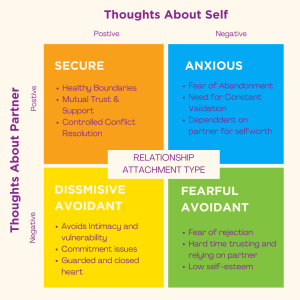Few psychological frameworks are as powerful for making sense of our relational patterns as attachment theory. Originally developed by John Bowlby and expanded by Mary Ainsworth, this model offers deep insight into how our earliest bonds shape the way we connect, trust and relate throughout life.
The Origins of Attachment
Attachment theory suggests that the bonds we form with our primary caregivers in early life lay the foundation for how we understand connection. These early interactions create internal “working models” that influence how we seek safety, manage intimacy and respond to emotional closeness.
These patterns don’t just affect childhood - they echo throughout our adult lives. From romantic relationships to friendships, workplace dynamics to parenting approaches, the imprint of attachment shows up more often than we might think.
The Four Attachment Styles
Understanding attachment styles begins with recognising the four core patterns identified by research. While most people aren’t a perfect fit in any single category, these styles help highlight common ways people relate to others.
- Secure Attachment
People with secure attachment usually experienced consistent, responsive care growing up. As adults, they tend to:
- Trust others while maintaining boundaries
- Express emotions and needs openly
- Value closeness without losing independence
- Navigate conflict without fear of abandonment
- Anxious Attachment (Preoccupied)
This style often develops when caregiving was inconsistent - sometimes nurturing, other times emotionally unavailable. Common traits in adulthood include:
- Fear of rejection or abandonment
- A tendency to seek reassurance
- Difficulty trusting a partner’s intentions
- High emotional sensitivity in relationships
- Avoidant Attachment (Dismissive)
Avoidant patterns often emerge from early experiences where emotional needs were dismissed or discouraged. Adults with this style may:
- Prioritise independence over connection
- Minimise emotional expression
- Struggle with vulnerability
- Withdraw or shut down during conflict
- Disorganised Attachment (Fearful-Avoidant)
The most complex of the four, disorganised attachment typically results from early environments marked by fear, chaos or trauma. This style can look like:
- A push-pull dynamic in relationships
- Difficulty regulating emotions
- A desire for closeness coupled with fear of it
- Trust issues that feel hard to resolve

Beyond Labels: A Spectrum, Not a Box
Understanding attachment styles is not about labelling yourself - it’s about noticing patterns. Most people don’t fit neatly into one category and may behave differently depending on the relationship. These styles exist on a spectrum and can shift over time, especially with reflection, support, and self-awareness.
How Attachment Styles Interact
Relationship dynamics often get more complicated when different attachment styles interact. Some common pairings include:
- Anxious-Avoidant: A challenging loop where one partner seeks closeness while the other pulls away.
- Secure-Insecure: A more stable pairing where a secure partner can help ease insecurity over time.
- Similar Insecure Styles: This can bring mutual understanding, but may also reinforce unhelpful cycles.
The Possibility of Earned Security
One of the most empowering aspects of understanding attachment styles is knowing they can change. “Earned secure attachment” is the term for developing a more secure relational style through intentional effort and healthier experiences.
This process often includes:
- Recognising your triggers and patterns
- Gaining clarity about where these patterns come from
- Practising emotional regulation and assertive communication
- Learning to tolerate vulnerability
- Grieving unmet childhood needs and building new relational experiences
Change doesn’t always happen overnight, but it’s possible - and worth it.
Everyday Applications
Understanding attachment styles can improve connection in everyday life, not just in romantic relationships. Here are a few ways to put these insights into practice:
- Self-awareness: Notice your tendencies - do you cling, avoid or connect with balance?
- Empathy: Try to understand where someone else’s behaviour might be coming from, rather than assuming malice.
- Communication: Be open about your needs and boundaries, even when it feels uncomfortable.
- Reflection: Pause and ask yourself whether a reaction is about the present moment or an old pattern playing out.
 Not a Life Sentence
Not a Life Sentence
Attachment patterns are persistent, but they’re not permanent. With increased self-awareness and consistent effort, it’s absolutely possible to build more secure and fulfilling relationships.
Understanding attachment styles isn’t about rewriting the past—it’s about making conscious choices in the present. It gives us a map to navigate the messy, meaningful and often beautiful business of being human together.

